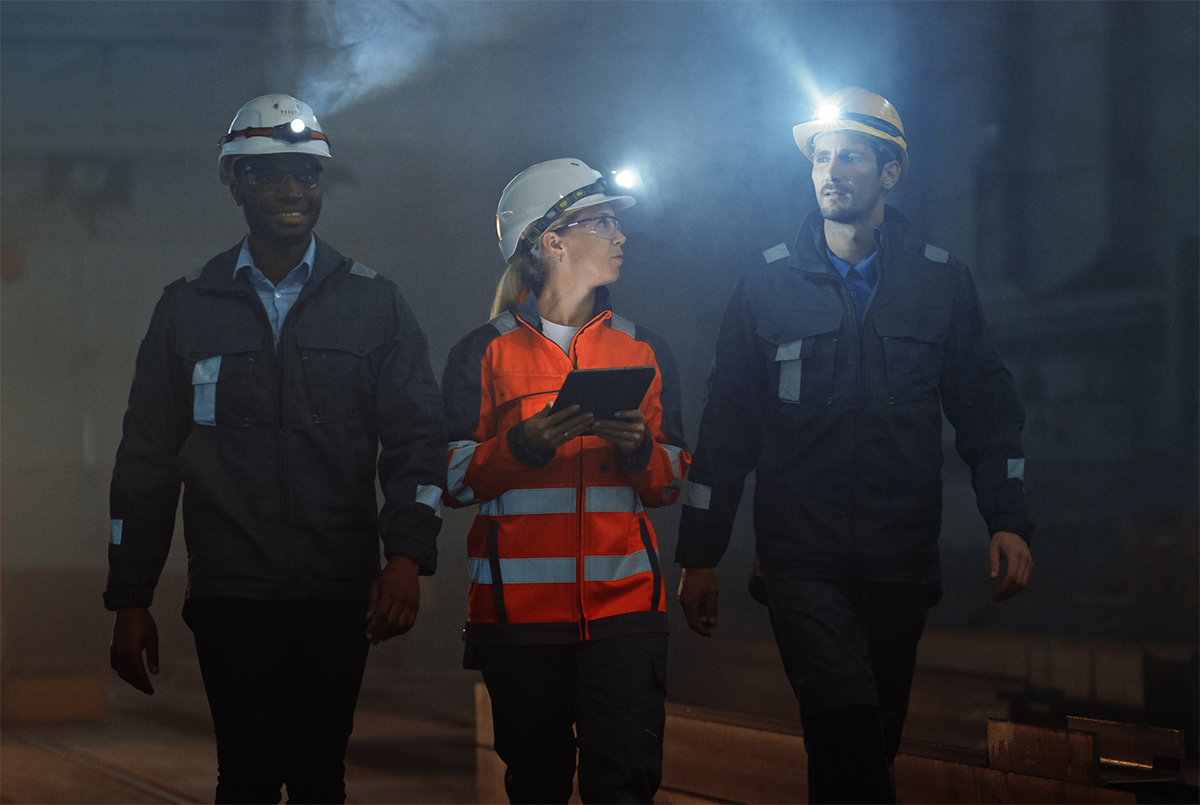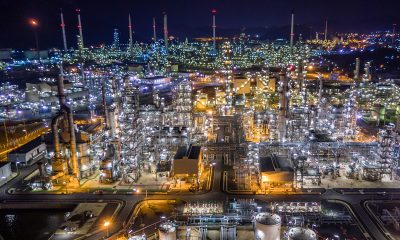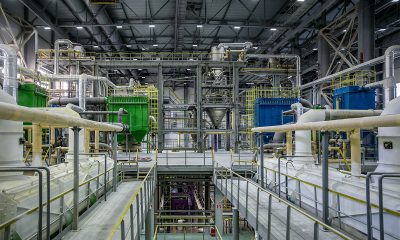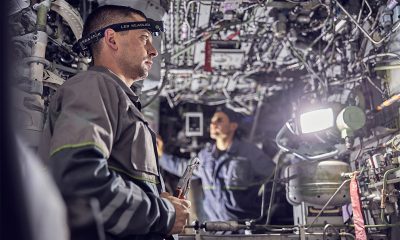Developed to answer the need for safety and reliability
A hazardous location certified LED headlamp is a personal area/work light that provides hands-free illumination in environments where fire or explosion hazards may exist. It attaches to a headband that fits around your head or fastened to a hard hat. As your head turns, the light will direct light wherever you face. The incorporation of LED technology into headlamps redefines usability ad reliability of the products. LED headlamps feature a lightweight, compact design and provide a comfortable fit. They deliver extended run times and pack a powerful punch to provide dependable performance you can count on for use in mission critical applications.
Hazardous location certified LED headlamps are built to overcome the inherent challenges of environments made hazardous by the presence of flammable gases, liquids and vapors, combustible dusts and ignitable fibers and flyings. These battery-operated lights have been developed with a mission to help you work safely, comfortably and productively in chemical plants, petrochemical facilities, gas processing plants, painting facilities, pipeline pumping stations, LNG facilities, sewage treatment plants, pulp and paper mills, off-shore and dockside installations, and marine loading and fuel transfer terminals.
Hazardous area classifications
Headlamps are electrical devices that may produce arcs, sparks, or high temperatures. These elements may cause a hazardous condition in environments in which an ignitable or explosive concentration of the hazardous substance is present. Hazardous location lighting devices therefore must be carefully designed to eliminate the potential for the hazardous condition to occur. These products must also be certified for use in hazardous locations defined by applicable electrical codes, standards and regulations. Level of explosion protection assigned to hazardous location equipment is based on the likelihood of the hazardous substance being present in an ignitable or explosive concentration.
Hazardous locations are classified depending on this likelihood and the properties of hazardous substances. Standards for hazardous location classification in North America have been established in the National Electrical Code (NEC) and Canadian Electrical Code (CEC), which are published by the National Fire Protection Association (NFPA) of the U.S. and the Canadian Standards Association (CSA), respectively. The international method of hazardous location classification is defined by the IECEx system developed by the International Electrotechnical Commission (IEC). The ATEX Directive, which is technically identical to the IECEx system and applies to the European Union, is set forth by the European Committee for Electrotechnical Standardization (CENELEC).
ATEX/IECEx
IEC and CENELEC classify hazardous locations using the Zone System which divides the level of hazard probability of flammable gases and combustible dust into three zones. Zone 0 applies to locations in which ignitable concentrations of flammable gases or vapors exist continuously or for long periods of time. Zone 1 applies to locations in which ignitable concentrations of flammable gases or vapors are likely to exist under normal conditions. Zone 2 applies to locations in which ignitable concentrations of flammable gases or vapors have a low probability of presence and are present only during abnormal conditions for a short period of time. Zone 20 refers to areas where combustible dusts or ignitable fibers and flyings in quantities sufficient to produce an explosive mixture are present continuously or for long periods of time. Zone 21 refers to areas where combustible dusts or ignitable fibers and flyings in quantities sufficient to produce an explosive mixture are likely to exist during normal operations. Zone 22 refers to areas where combustible dusts or ignitable fibers and flyings in quantities sufficient to produce an explosive mixture have a low probability of presence and exist only during abnormal conditions for a short period of time.
Industrial gases are divided into three groups, IIA, IIB and IIC. Group IIA is the least dangerous than group and IIC is the most dangerous. Dust is also divided into three groups depending on the conductivity of the particulates: IIIA (combustible flyings), IIIB (non-conductive combustible dust, specific electrical resistance > 10³ ohmmeters), IIIC (conductive combustible dust, specific electrical resistance < 10³ ohmmeters).
NEC/CEC
In the NEC/CEC standards, the types of hazardous locations are broken down into three classes. Class I locations are those in which flammable vapors or gases in quantities sufficient to be hazardous may be present. Class II locations are those which are hazardous due to the presence of combustible or electrically conductive dusts in quantities sufficient to create a fire or explosion hazard. Class III locations are hazardous due to the presence of easily ignitable fibers or flyings which present a serious fire risk, not normally an explosion hazard.
Each of the three classes is further broke into two divisions. Division 1 environments are normally hazardous due to the presence of hazardous gases or dusts under normal operation conditions or during frequent repair and maintenance activity. Division 2 environments are not normally hazardous and the hazard exists only due to accidental system breakdowns or abnormal operations.
Class I locations are further divided into groups A, B, C, and D based on the ignition temperature, explosion pressure and other flammable characteristics of the hazard substance present. The sole substance in group A is acetylene which generates the highest explosive pressures. Group D gases (propane, butane, gasoline) generate the lowest explosive pressures.
Within Class II are another set of groups: E (metallic dusts), F (carbon black coal or coke dust) and G (flour, starch or grain dust).
Explosion protection
Electrical equipment intended for safe use in hazardous environments must be developed, tested and certified in conformance to technical requirements laid down in the standards relating to hazardous location applications. There exist different ways of eliminating the likelihood of ignition or explosion arising from the use of lighting equipment. A commonly used one is based on the concept of explosion containment. An explosion-proof enclosure with a mechanical strength strong enough to withstand a high pressure developed inside is used to contain a possible internal explosion. A flame path is provided for the passage and escape of the sufficiently cooled burning gas. The philosophy of this type of protection is to prevent the transmission of an internal explosion to the outside atmosphere. A variety of hazardous location lighting fixtures have been created in this way. A bulky, heavyweight enclosure is characteristic of such lighting fixtures.
Intrinsic safety
Hazardous location certified LED headlamps, however, are typically designed as intrinsically safe products. An intrinsically safe device limits the amount of energy onto a circuit below the minimum ignition energy (MIE) of hazardous materials so that the energy available in forms of sparks or thermal effects is incapable of igniting the hazardous atmosphere under normal or abnormal conditions. Battery operated LED headlamps run on a drive current of less than 300 mA and a voltage of less than 29V. The energy behind an arc or spark produces by the lights is insufficient to ignite the hazardous material. Low power operation also eliminates the possibility of thermal ignition due to heat emission of the LEDs and the circuit.












Loading...